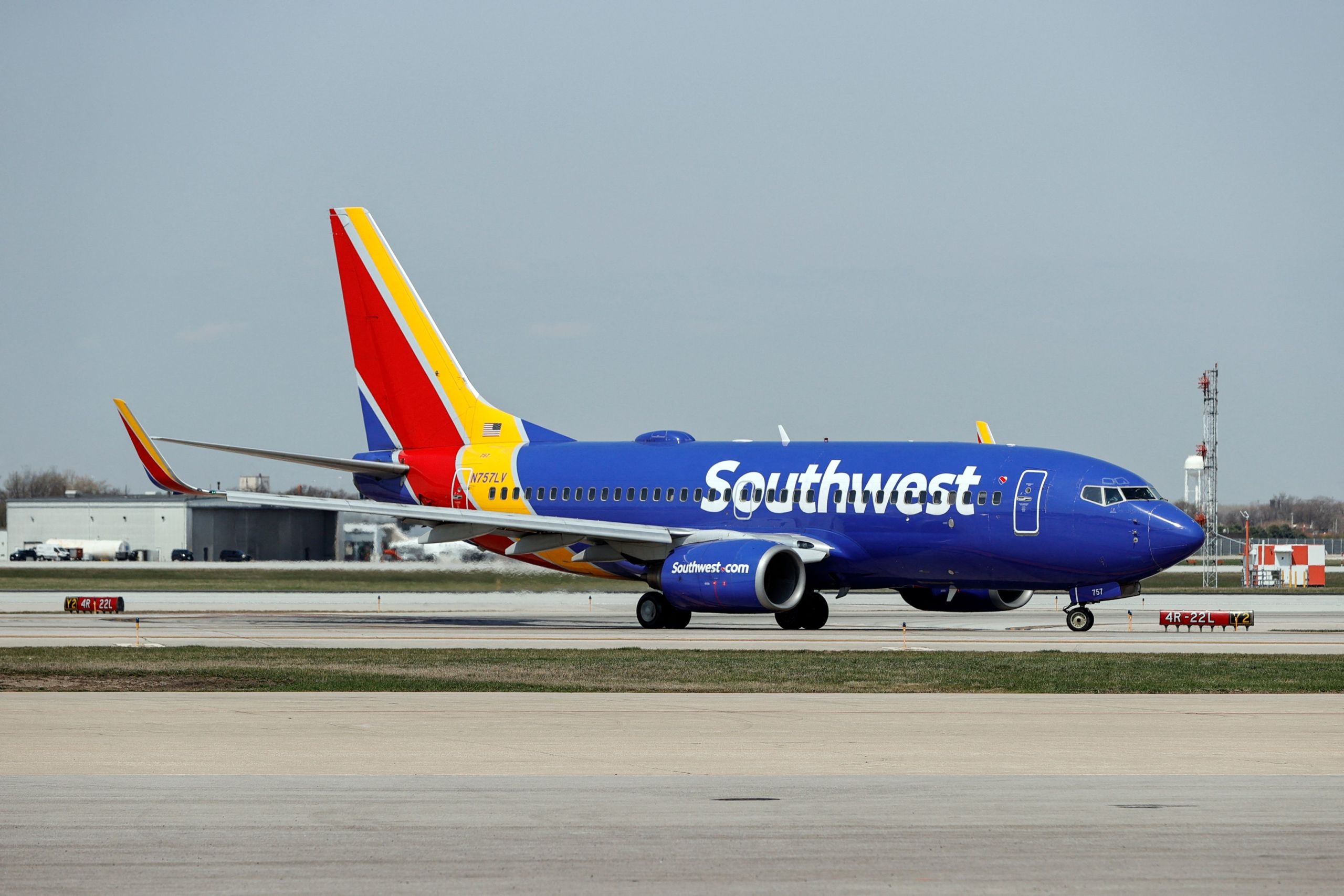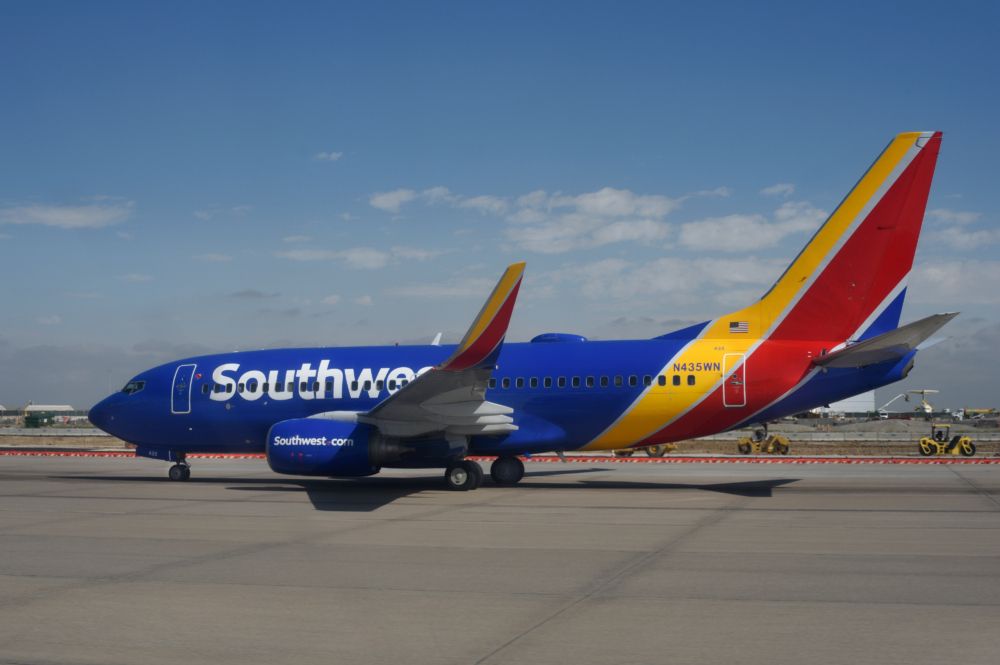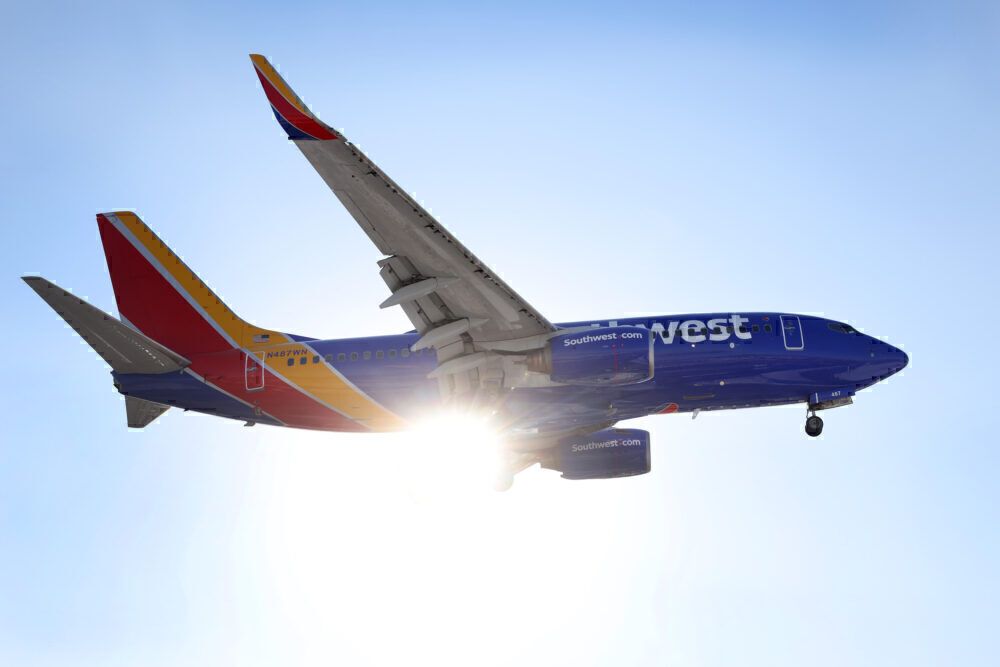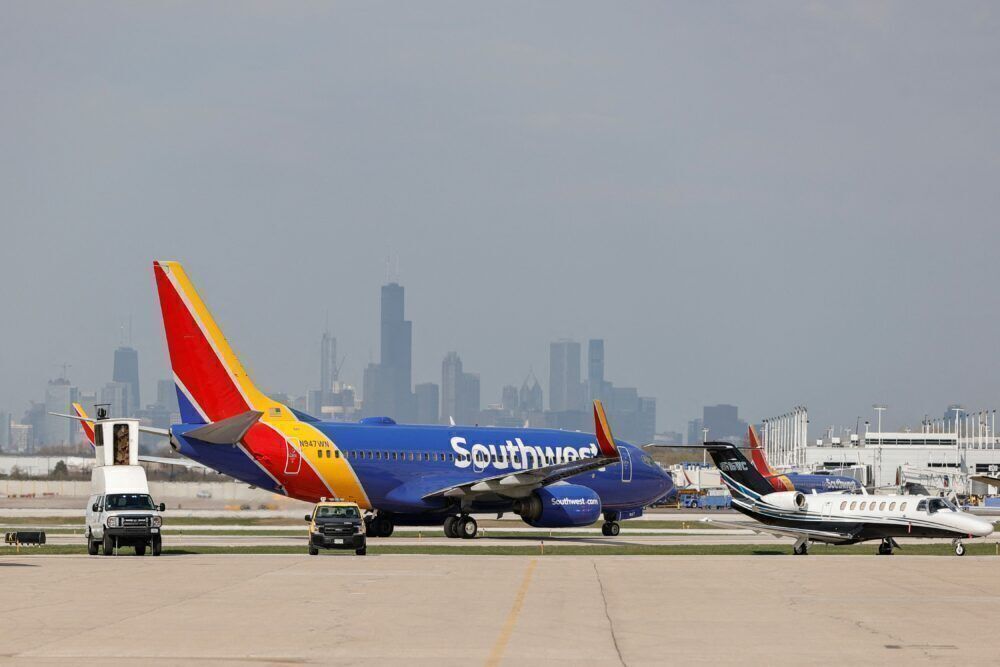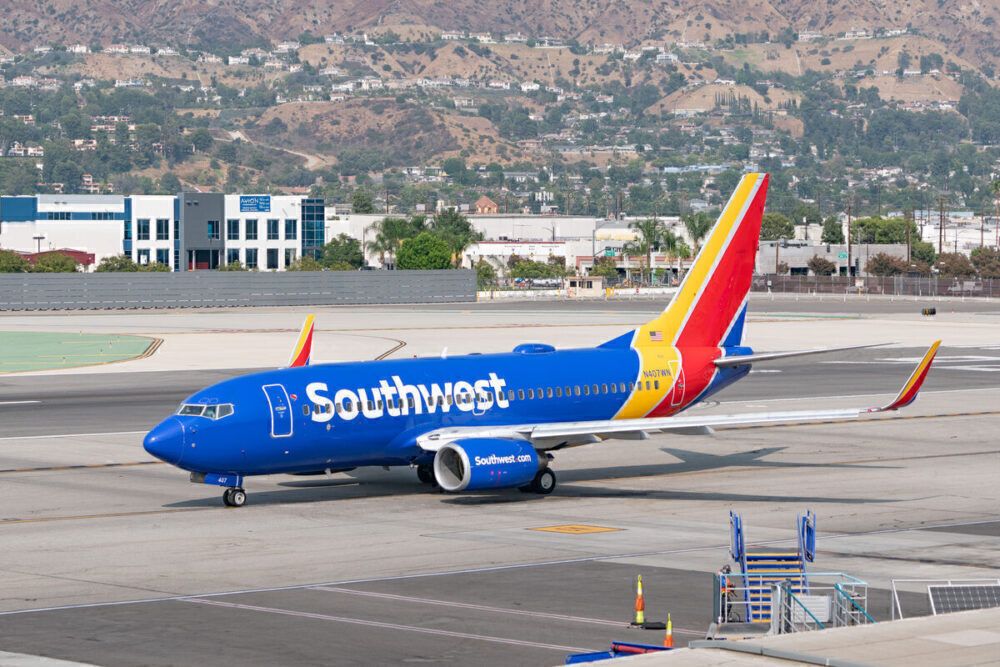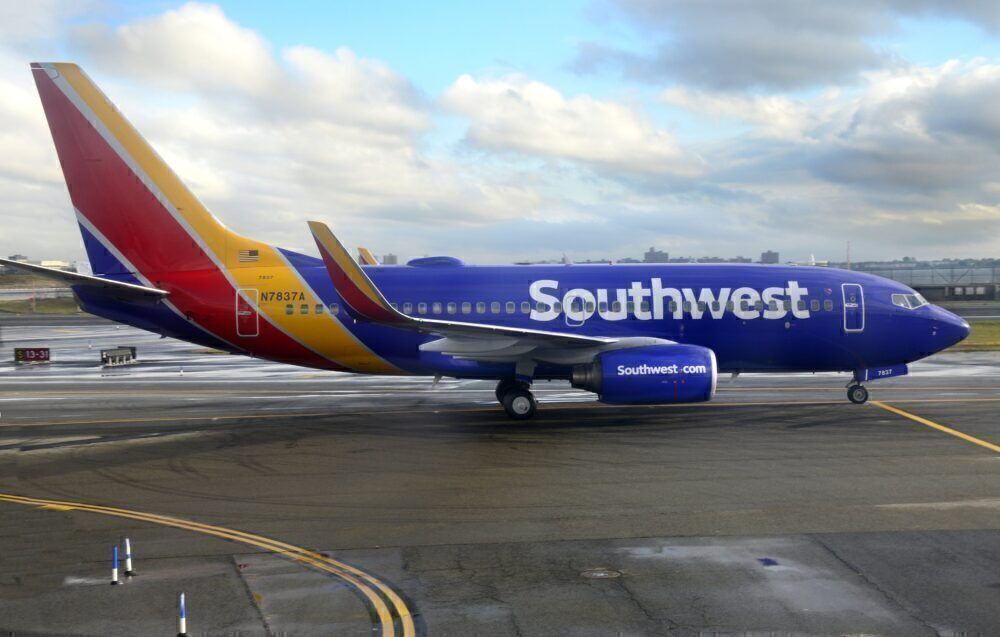Southwest Airlines has indicated that it is seeing some negative impact from the rise in cases associated with the Delta variant. While strong leisure passenger traffic and fares supported the airline's bottom-line in July, in recent weeks, the airline has started to see higher cancellations and a decrease in bookings that it attributes to the variant.
Southwest sees a negative impact
In recent weeks, Southwest Airlines has noted that it is seeing a deceleration in close-in bookings and an increase in close-in trip cancellations for the month. The carrier has attributed these trends to the rise in COVID-19 cases associated with the Delta variant.
As a result, Southwest has pulled back some of its estimated performance for the third quarter. However, it still expects to fly a significant amount of capacity, which could put downward pressure on its load factor.
For August 2021, the airline's operating revenue compared to 2019 is expected to be down 15-20%. This compares to the previous estimation of 12-15%. Southwest has increased both the floor and ceiling for the revenue decline. In September, it expects revenue to be down between 15-25%.
Southwest expects to fly an 80% load factor in August and a load factor between 75-80% in September. This is on capacity that Southwest expects will be up 3% compared to 2019 when looking at available seat miles (ASMs). It plans to offer a comparable amount of ASMs in September 2021 compared to September 2019.
All of this comes to an estimated third-quarter operating revenue that is down 15-20% with a load factor of 80-85%. All of this comes on capacity for the quarter that is expected to be comparable to the same quarter in 2019. These numbers factor in elevated near-term COVID-19 cases and current revenue trends.
In terms of profitability in its own right, Southwest believes it may not turn a profit in the third quarter (excluding the benefit from the Payroll Support Program) due to the increased negative effects of the pandemic on August and September revenue trends. This is a turnaround from what the airline said in mid-July.
Coming off of a strong July
July was a solid month for Southwest Airlines. The carrier saw operating revenue down about 12%, which fell at the lower end of its down 10-15% guidance for the month. It flew capacity roughly three points lower than July 2019 but notched a load factor of roughly 87%.
Leisure travel rebounded incredibly in July, with strong leisure passenger traffic and fares topping July 2019 levels. However, in 2021, managed business revenues were approximately 63% down compared to July 2019. Business travel has rebounded slower than leisure travel, but travelers are starting to come back.
Southwest was profitable again in July 2021 in its own right. Separately, it turned a profit in the second quarter of 2021 amid strong leisure travel rebounds. July is typically one of the strongest months for airlines, with schools closed for the summer and warm weather across the United States and key vacation hotspots.
In fact, during the month, the airline has been turning its attention to the next year and beyond. Growth seemed on the horizon as the airline closely examined its options for the Boeing 737 MAX and started to hire some pilots.
Stay informed: Sign up for our daily and weekly aviation news digests.
A choppy recovery
The recovery was never anticipated to be smooth and even. There was a clear acceleration in March with rising vaccinations and the relaxation of travel restrictions. That continued into the summer as shots continued to go to people's arms, more restrictions came down, more people took to the skies.
From March through July, it seemed that the pandemic had finally started to recede with an increase in vaccinations and declining case counts. Then, the Delta variant started to spread in the United States. States like Texas, Louisiana, Mississippi, Alabama, Georgia, Florida, California, North Carolina, and more have seen a steep increase in case counts and concern from travelers in other parts of the United States.
From a peak of up to four million doses of the vaccine going into arms each day, the US is now down to around 713,000 average doses per day, according to data from the New York Times. In the US, about 69% of the population aged 12 and up, or 59% of all Americans, have received at least one dose of the vaccine. However, vaccinations vary state-by-state.
Passengers have shown that they are motivated by case counts. A steep decrease in travelers has not accompanied the recent sharp uptick. Routinely, surrounding peak leisure travel days, the industry has recorded over two million passengers in a day – continuing trends from June. While there has been a slight decrease in overall travel numbers, even on the worst days since the start of August, over 1.7 million passengers have boarded a plane.
At the end of the day, Southwest has started to see an impact from the Delta variant. This echoes some of the comments Frontier Airlines has made, though it is unclear how long these trends will last and whether airlines will need to turn to price stimulation to get passengers back in the air.
September is a much more business-heavy month, given that schools will go back into session. Business travel has not come back entirely, and the recent rise in cases based on the Delta variant may temper the return of business travel. Nevertheless, the recent impact of the variant has shown that the recovery will continue to be choppy.
Have you altered your travel plans over the Delta variant? What do you make of Southwest's expectations? Let us know in the comments!

